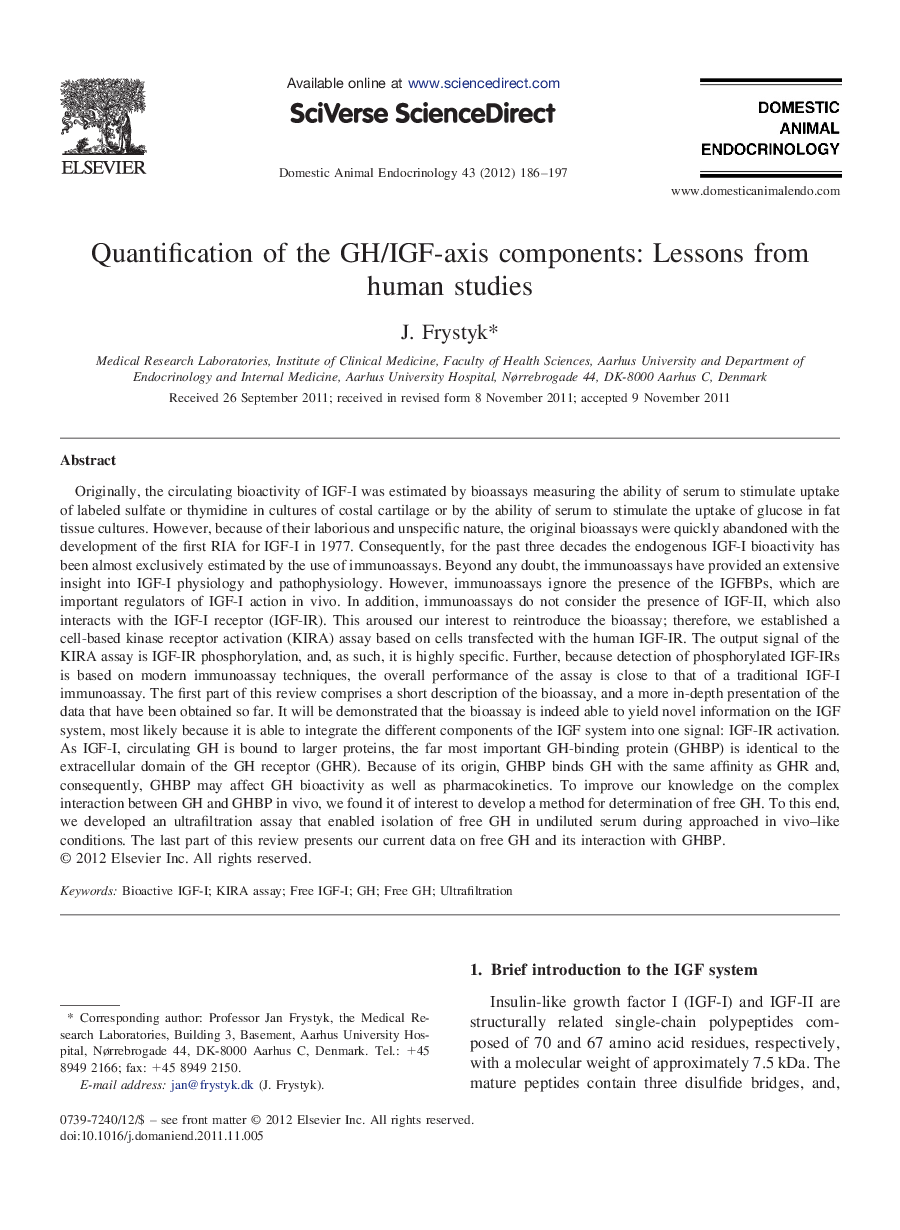| کد مقاله | کد نشریه | سال انتشار | مقاله انگلیسی | نسخه تمام متن |
|---|---|---|---|---|
| 2393692 | 1101338 | 2012 | 12 صفحه PDF | دانلود رایگان |

Originally, the circulating bioactivity of IGF-I was estimated by bioassays measuring the ability of serum to stimulate uptake of labeled sulfate or thymidine in cultures of costal cartilage or by the ability of serum to stimulate the uptake of glucose in fat tissue cultures. However, because of their laborious and unspecific nature, the original bioassays were quickly abandoned with the development of the first RIA for IGF-I in 1977. Consequently, for the past three decades the endogenous IGF-I bioactivity has been almost exclusively estimated by the use of immunoassays. Beyond any doubt, the immunoassays have provided an extensive insight into IGF-I physiology and pathophysiology. However, immunoassays ignore the presence of the IGFBPs, which are important regulators of IGF-I action in vivo. In addition, immunoassays do not consider the presence of IGF-II, which also interacts with the IGF-I receptor (IGF-IR). This aroused our interest to reintroduce the bioassay; therefore, we established a cell-based kinase receptor activation (KIRA) assay based on cells transfected with the human IGF-IR. The output signal of the KIRA assay is IGF-IR phosphorylation, and, as such, it is highly specific. Further, because detection of phosphorylated IGF-IRs is based on modern immunoassay techniques, the overall performance of the assay is close to that of a traditional IGF-I immunoassay. The first part of this review comprises a short description of the bioassay, and a more in-depth presentation of the data that have been obtained so far. It will be demonstrated that the bioassay is indeed able to yield novel information on the IGF system, most likely because it is able to integrate the different components of the IGF system into one signal: IGF-IR activation. As IGF-I, circulating GH is bound to larger proteins, the far most important GH-binding protein (GHBP) is identical to the extracellular domain of the GH receptor (GHR). Because of its origin, GHBP binds GH with the same affinity as GHR and, consequently, GHBP may affect GH bioactivity as well as pharmacokinetics. To improve our knowledge on the complex interaction between GH and GHBP in vivo, we found it of interest to develop a method for determination of free GH. To this end, we developed an ultrafiltration assay that enabled isolation of free GH in undiluted serum during approached in vivo–like conditions. The last part of this review presents our current data on free GH and its interaction with GHBP.
Journal: Domestic Animal Endocrinology - Volume 43, Issue 2, August 2012, Pages 186–197